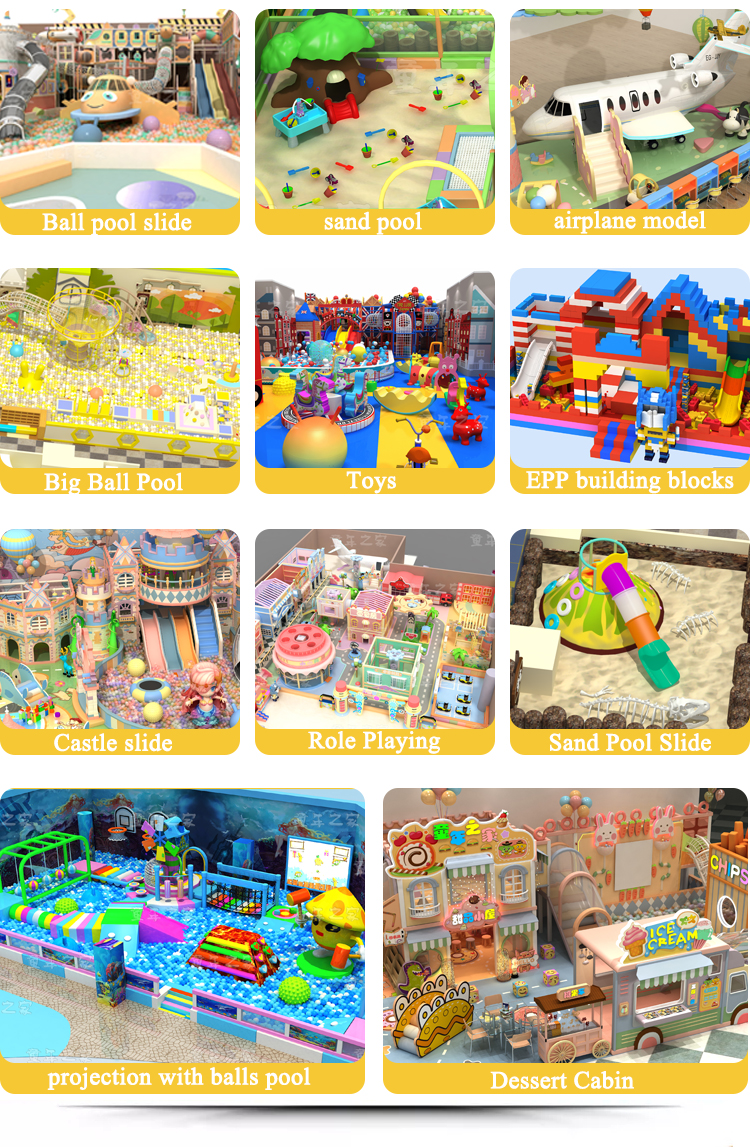25 Jul, 2024
Creating a vibrant and engaging indoor play area is essential for fostering children's physical, cognitive, and social development. Whether you are designing a play space for a commercial setting, such as a daycare or a family entertainment center, or for home use, selecting the right indoor play area equipment is crucial. This article will list the must-have pieces of equipment that can transform any indoor space into a fun and safe playground for children.

Jungle gyms are a staple in any indoor play area. These structures provide children with the opportunity to climb, swing, and explore, promoting physical activity and improving gross motor skills. Jungle gyms come in various sizes and designs, making them suitable for different spaces and age groups. They often include features like ladders, monkey bars, and slides, offering a comprehensive play experience that keeps children engaged and active.
Slides are another essential piece of indoor play area equipment. They add an element of excitement and adventure to the play space. Slides can be standalone structures or integrated into larger play systems like jungle gyms. They help children develop balance and coordination while providing a fun way to move from one level of the play area to another. For smaller spaces, consider compact or foldable slide options that can be easily stored when not in use.
Tunnels and crawlspaces are excellent for encouraging imaginative play and cognitive development. These structures allow children to explore and navigate through confined spaces, which can enhance their spatial awareness and problem-solving skills. Tunnels can be soft and flexible, making them safe for younger children, or more rigid and complex for older kids. Including tunnels in your indoor play area can create a dynamic and interactive environment that stimulates curiosity and exploration.
Ball pits are a favorite among young children and provide a sensory-rich play experience. They are filled with colorful plastic balls that children can dive into, swim through, and throw around. Ball pits help develop fine motor skills and hand-eye coordination while offering a fun and safe environment for active play. They are particularly beneficial for toddlers, as the softballs and cushioned pit reduce the risk of injury.
Climbing walls are perfect for older children who seek more challenging physical activities. These walls can be designed with various levels of difficulty to cater to different age groups and skill levels. Climbing helps build strength, endurance, and flexibility, making it an excellent addition to any indoor play area. Safety should be a priority, so ensure that the climbing wall is equipped with soft mats or padding to cushion falls.
Interactive play panels are a fantastic way to incorporate educational elements into your indoor play area. These panels can feature puzzles, games, musical instruments, and other interactive activities that engage children's minds and encourage learning through play. They are particularly useful in settings like schools and daycare centers, where educational play is a key focus. Interactive play panels can be wall-mounted or freestanding, depending on the available space.
Soft play equipment is essential for creating a safe and inclusive play environment, especially for younger children and toddlers. This equipment includes soft blocks, mats, and cushioned obstacles that children can climb over, crawl through, and play on without the risk of injury. Soft play areas are designed to be safe and comfortable, allowing children to explore and play freely while developing their motor skills and coordination.
Trampolines are a great addition to any indoor play area, providing a fun way for children to burn off energy and improve their balance and coordination. Indoor trampolines are typically smaller and have safety features like padded edges and enclosures to prevent accidents. They are suitable for children of various ages and can be used individually or as part of group play activities.
Sensory play areas are designed to stimulate children's senses and promote sensory development. These areas can include a variety of equipment, such as sand and water tables, textured mats, and sensory bins filled with different materials like rice, beans, or foam. Sensory play helps children explore their environment and develop cognitive and motor skills through hands-on activities.
Role-play zones encourage imaginative play and social interaction. These areas can be set up with themed equipment, such as play kitchens, workshops, or dress-up stations, where children can engage in pretend play and role-playing activities. Role-play zones help develop creativity, language skills, and social abilities as children interact with their peers and create their own stories and scenarios.
Investing in the right indoor play area equipment is crucial for creating a safe, engaging, and developmentally beneficial environment for children. From jungle gyms and slides to interactive play panels and sensory play areas, each piece of equipment offers unique benefits that contribute to children's overall growth and well-being. Whether you are setting up a commercial indoor playground or a home play area, these must-have equipment pieces will ensure that children have a fun and enriching play experience all year round.